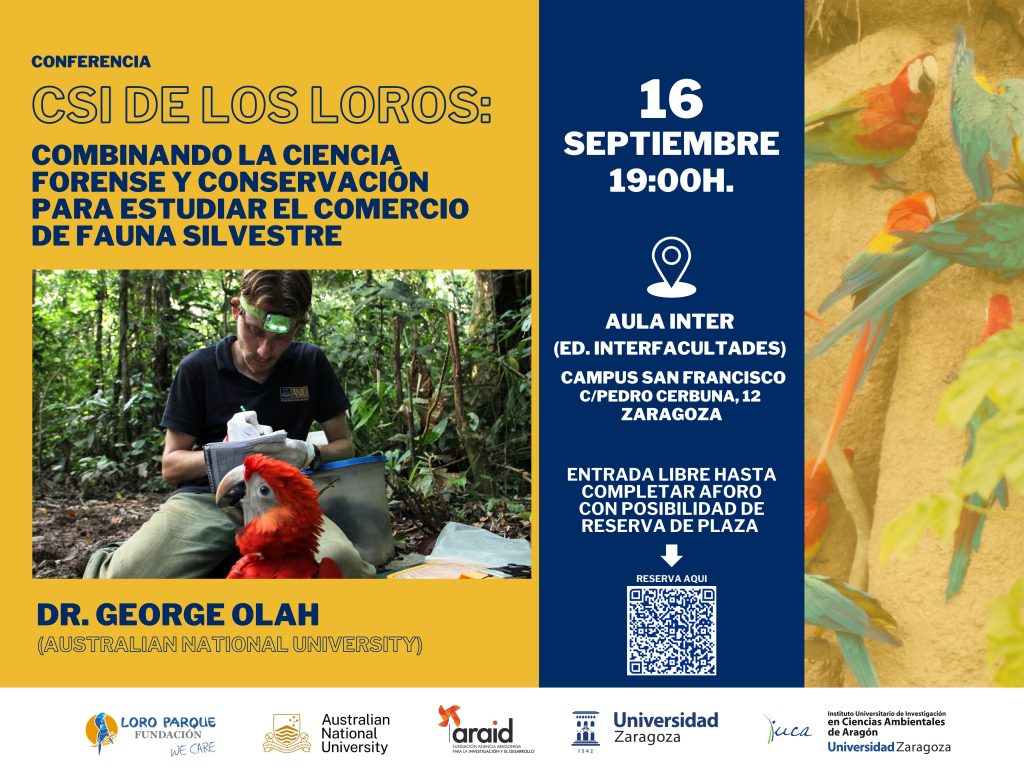(Zaragoza. Thursday, September 5, 2024). On Monday, September 16, at 7:00 p.m., the lecture “CSI of Parrots: Combining Forensic Science and Conservation to Study the Wildlife Trade” will be delivered by Dr. George Olah (Australian National University) at the INTER ROOM (Interfacultades Building, San Francisco Campus, University of Zaragoza). Admission is free, but seating is limited. You can reserve a spot by registering on Eventos Unizar.
The lecture will be given in Spanish.

Summary
Parrots are a well-known and diverse group of birds, mainly distributed in tropical and subtropical regions. Unfortunately, one-third of their species are currently facing extinction, primarily due to anthropogenic threats. The global and domestic demand for parrots as pets and their subsequent extraction from the wild for illegal trade have significantly contributed to their sharp decline worldwide. Criminological models provide valuable tools for analyzing the factors associated with the trade of parrots, and emerging genetic tools have already made important contributions to understanding both the basic and applied aspects of the biology and conservation of parrots in the wild and captivity. Dr. Olah will describe how genetics has helped advance knowledge in conservation genetics through examples from literature and his collaborative research projects. He will also discuss his current multidisciplinary projects, spanning from Peru to Indonesia, which focus on genomics, criminology, and ancient DNA to better understand the illegal parrot trade. These efforts can help restore threatened populations while raising local and international awareness through documentaries.
Dr. Olah is a conservation scientist and geneticist who primarily works with parrots and other birds. He earned his Master of Science in Zoology from the University of Veterinary Medicine in Hungary in 2006. After graduating, he participated in numerous field research projects on parrots in Central and South America, including Argentina, Mexico, Peru, and Bolivia. He spent several years working on the Tambopata Macaw Project in the Peruvian Amazon and also in the ecotourism industry in Peru. Realizing that human impacts on parrot and macaw habitats were accelerating, he decided to pursue a PhD in conservation biology to enable a scientifically-based assessment of conservation management in the area. He completed his PhD at the Australian National University in 2016, where he later engaged in endangered parrot research as a Postdoctoral Researcher. He has also worked with the BBC Natural History Unit on multiple documentary series and serves as Director of Wildlife Messengers and Visiting Researcher at King’s Forensics, King’s College London. His current research, supported by the Australian Research Council, focuses on developing forensic genomic techniques to study the illegal parrot trade.
This event is organized by the Aragón Environmental Science Research Institute (IUCA) in collaboration with the Aragonese Agency for Research and Development Foundation (ARAID), the Loroparque Foundation, and the Australian National University.

